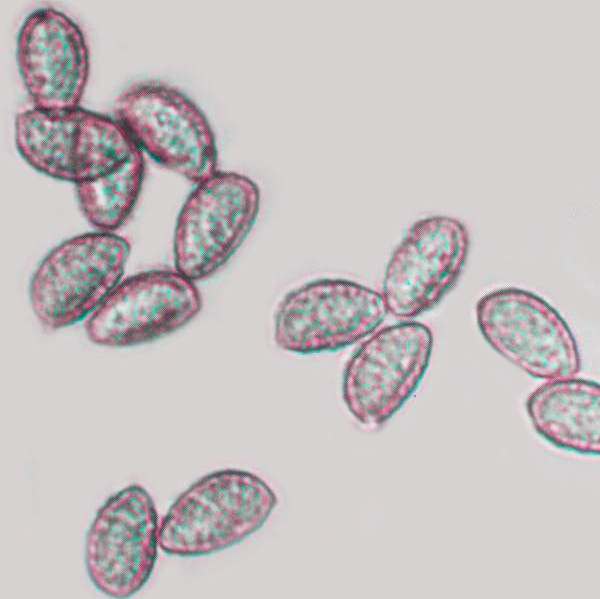Hebeloma sinapizans (Paulet) Gillet - Bitter Poisonpie
Phylum: Basidiomycota - Class: Agaricomycetes - Order: Agaricales - Family: Strophariaceae
Distribution - Taxonomic History - Etymology - Toxicity - Identification - Reference Sources
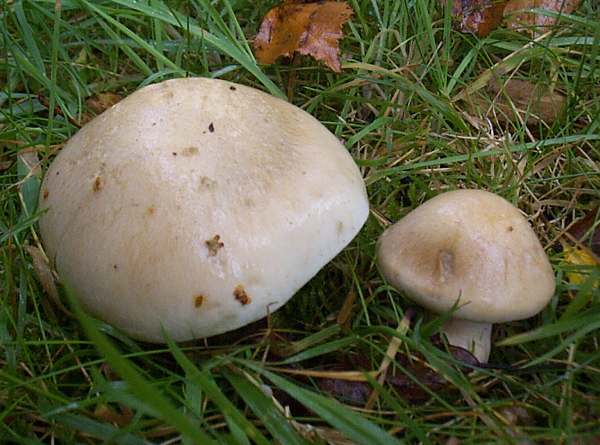
On average rather larger than Hebeloma crustuliniforme, Poisonpie, and often with a darker centre, Bitter Poisonpie is otherwise very similar and just as poisonous as the close relative with which it is easily confused.
Bitter Poisonpie generally has a more swollen stem base and is found in chalk or limestone areas where the soil is alkaline. In Britain and Ireland, beechwoods are the most common habitat for this mycorrhizal fungus.
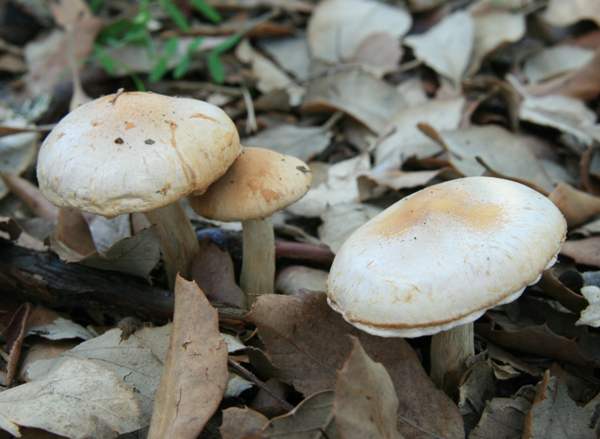
Distribution
Only an occasional find in Britain and Ireland, most often in small tufted groups in broadleaf woodlands where it fruits usually in association with Beech trees, this bright and conspicuous mushroom is found also throughout most of mainland Europe, where oak trees as well as Beech are its favoured mycorrhizal partners. In North America a mushroom very similar to the European species known as Bitter Poisonpie is currently given the same scientific name although it may turn out to be one or more different species.
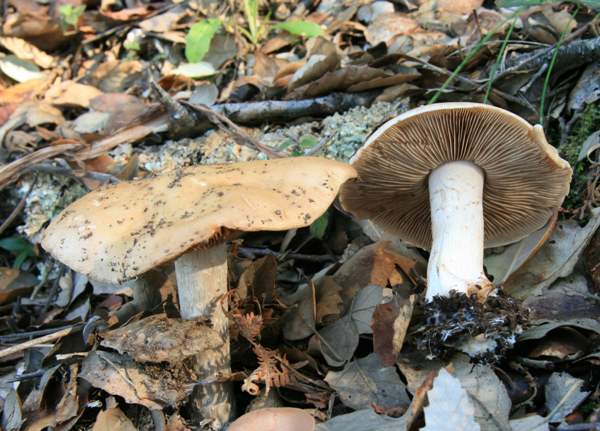
Taxonomic history
This mushroom was described in 1793 by French mycologist Jean-Jacques Paulet (1740 - 1826) who gave it the binomial scientific name Hypophyllum sinapizans. It was another Frenchman, Claude-Casimir Gillet (1806 - 1896), who in 1874 transferred this species to the genus Hebeloma, whereupon its currently-accepted scientific name Hebeloma sinapizans was established.
Synonyms of Hebeloma sinapizans include Hypophyllum sinapizans Paulet, and Agaricus sinapizans (Paulet) Fr.
Etymology
The generic name Hebeloma comes from two Ancient Greek words: hebe- means youth, and the suffix -loma means a veil. Thus mushrooms of this genus have a veil (the partial veil that covers the gills) only in the early stages of fruitbody development - when they are youthful. We come across that suffix -loma in several other fungi genera including Entoloma, and Tricholoma. The specific epithet sinapizans comes from Latin sinapis which means mustard; it is a reference to the typical yellowish-ochre colour of caps of the Bitter Poisonpie.
Toxicity
The common name Bitter Poisonpie should be quite enough to warn anyone from gathering these mushrooms for food. This is a toxic toadstool and it should definitely not be picked for eating.
Identification guide
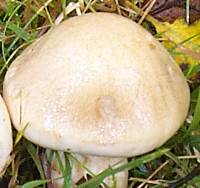 |
CapPale buff to yellowish-ochre, darker in centre, becoming light brown with sometimes a cinnamon tinge at maturity; bell-shaped with an involute (incurved or slightly inrolled margin) remaining incurved until the cap is almost fully expanded; becoming broadly concave or slightly umbonate and eventually almost flat; sticky when wet, smooth and silky when dry; margin often slightly wavy and occasionally lobed; 5 to 13cm across. |
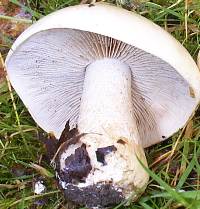 |
GillsClay-buff, becoming reddish-brown with age; emarginate, notched; crowded; differing from Hebeloma crustuliniforme in not exuding watery droplets that dry as brown spots. StemWhite or very pale yellow; mealy towards the apex and often finely scaly below; cylindrical with a swollen base; 5 to 12cm long, 1 to 2cm diameter; no ring. |
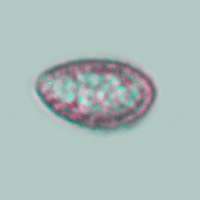 |
SporesAlmond-shaped to lemon-shaped, covered with small surface warts,10-13 x 6.5-8μm; slowly dextrinose. Spore printReddish-brown. |
Odour/taste |
Strong odour of radish; bitter taste. |
Habitat & Ecological role |
Usually in small groups in broadleaf woodland on alkaline soil; occasionally with conifers. |
Season |
July to November in Britain and Ireland. |
Similar species |
Hebeloma crustuliniforme is typically rather smaller with a less bulbous stem base; it often occurs on acidic soil, does not have a persistent incurved cap margin, and has gills that in wet weather release watery droplets that dry as dark spots on the gills. It is, despite all the above, very difficult to separate these two species in the field from macroscopic characters alone. |
Reference Sources
Fascinated by Fungi, 2nd Edition, Pat O'Reilly 2016, reprinted by Coch-y-bonddu Books in 2022.
Dictionary of the Fungi; Paul M. Kirk, Paul F. Cannon, David W. Minter and J. A. Stalpers; CABI, 2008
Taxonomic history and synonym information on these pages is drawn from many sources but in particular from the British Mycological Society's GB Checklist of Fungi.
Fascinated by Fungi. Back by popular demand, Pat O'Reilly's best-selling 450-page hardback book is available now. The latest second edition was republished with a sparkling new cover design in September 2022 by Coch-y-Bonddu Books. Full details and copies are available from the publisher's online bookshop...
